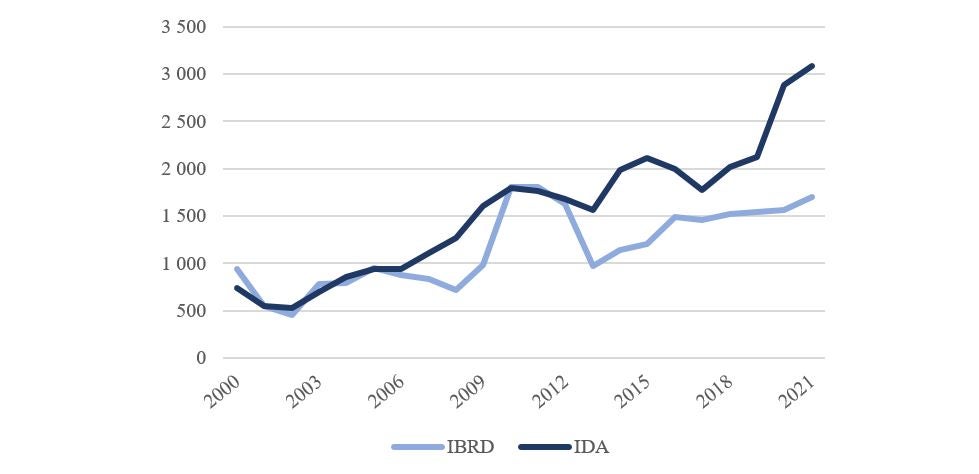 Public spending in education, which is the main source of education financing, remains inadequate in a majority of low- and lower-middle-income countries. Mohammad Al-Arief/The World Bank.
Public spending in education, which is the main source of education financing, remains inadequate in a majority of low- and lower-middle-income countries. Mohammad Al-Arief/The World Bank.
The world is facing a learning crisis in low- and lower-middle-income countries (LICs and LMICs). This is, to a large extent, a problem stemming from the chronic under-financing of education in many countries.
While learning poverty—a measure of children unable to read and understand a simple passage by age 10—has increased to 70 percent , public spending in education being the main source of education financing remains inadequate in a majority of LICs and LMICs. The 2022 Education Finance Watch (EFW 2022) documents the stark public spending (per capita) differences that exist and persist. On average, LICs spend $53 per capita on education, LMICs spend $318, and high-income countries (HICs) spend about $7,800 (figure 1).
Figure 1 (a,b): Government education spending across income groups
Low public spending on education results in households bearing a significant portion of education costs, often from a marginal income. In LICs, 39 percent of the total spending on education comes directly from households and in LMICs 26 percent is from households. This is compared to 2 percent in HICs. In LICs and LMICs, comparatively more affluent households spend more on education compared to poorer households, raising significant equity concerns. Another problem related to education financing is the reduced international financial support. In 2020 and 2021, official development aid (ODA) rose mostly in response to the COVID-19 pandemic; ODA to education lost ground to other sectors, primarily health (figure 2). In 2020, overall direct bilateral aid to education fell by $359 million.
Figure 2: Education, government, and health as a share of total sector-allocable aid (disbursements), 2010–20
In addition to low public spending, inequity in household spending, and reduced ODA, many countries are facing a significantly challenged macro-economic reality , including the impact of climate change and conflict. Many LICs and LMICs face serious challenges in implementing the urgent actions needed, including increased budget allocations to fight poverty.
Global transformation = local transformation?
In September 2022, the Transforming Education Summit was convened by the UN Secretary General (UNSG) during the 77th session of the UN General Assembly to galvanize solutions for some of the major challenges in education, one of them being education financing. Along with UNESCO and the Global Partnership for Education (GPE), the World Bank was the anchor agency for Thematic Action Track 5 (AT5), Financing of Education , supporting the governments of Fiji and Belgium and the Global Coalition for Education (GCE).
AT5 held public consultations with country representatives, development partners, civil society, and various stakeholders between May and June to harness perspectives on actions within the following three overarching areas: 1) mobilizing more domestic and international resources; 2) increasing the efficiency and equity of allocations and expenditures; and 3) improving education financing data and accountability. The action areas form the basis of the Call to Action on education financing, partly included in the UNSG’s Vision Statement calling for the international community to support, complement and stimulate national efforts in investing adequately, equitably and efficiently in education.
The World Bank is already taking transformative action on education financing
Moving forward, the World Bank as member of the SDG4 High-Level Steering Committee will play an active role in shaping the content of the Call to Action on education financing. In addition, in alignment with the UNSG’s Vision Statement, the World Bank will continue to work with governments and leverage existing global cooperation mechanisms to align resources in support of national education investment plans with a strong focus on achieving learning results at national level. A pertinent example is the Accelerator program , which supports governments in setting and monitoring foundational learning targets, alongside developing an evidence-backed plan outlining how to reach the targets, and the associated investment requirements.
Moreover, the World Bank’s approach to education financing aligns with the action areas of the AT5 Call to Action and the UNSG Vision Statement:
1. Mobilizing greater domestic and external resources for education: The World Bank, being the largest external financier of education in LICs, LMICs and middle-income countries (MICs), provides $23.61 billion in education funding to 95 countries (figure 3). Furthermore, the World Bank continues to be the largest implementing agency for the Global Partnership for Education (GPE) and manages 54 percent of the GPE portfolio.
Figure 3: World Bank commitments in education
In December 2021, the largest ever replenishment of the International Development Association—the World Bank’s fund for the poorest countries—raised $93 billion, and includes a specific focus on human capital and education aiming to reduce global learning poverty.
2. Increasing the efficiency and equity of education expenditures: The World Bank places a strong focus on improving equity, efficiency, and financial management. To this end, the World Bank developed the Fin-Ed toolkit (piloted in several countries such as Myanmar and will launch in January 2023) and conducts numerous public expenditure reviews annually, aimed at supporting country teams and clients in identifying key challenges and reform opportunities associated with financial management in the education sector.
3. Improving education financing data and accountability: Strengthening education financing data, accountability, and monitoring is key to achieving transformative change. This includes improving transparency, having better information for decision making, and supporting the publication of up-to-date country data, prioritizing key datasets. An example is the 2022 Education Finance Watch — the World Bank, along with the Global Education Monitoring Report and UNESCO Institute for Statistics, developed the EFW, which is an annual report series on the global state of education financing.
Transformative change must start now
Amid several global crises, learning poverty is a silent crisis that must be addressed urgently at the global and national levels. We must make the transformation of education a success by reaffirming our unwavering political and financial commitment to education; and act urgently to build more effective, equitable and resilient education systems, where learning for all children is at the core. Collaboration and transformative change must start now; if not, we risk losing a generation of children. And that will spell disaster.






Join the Conversation